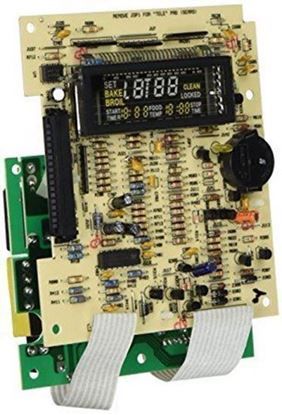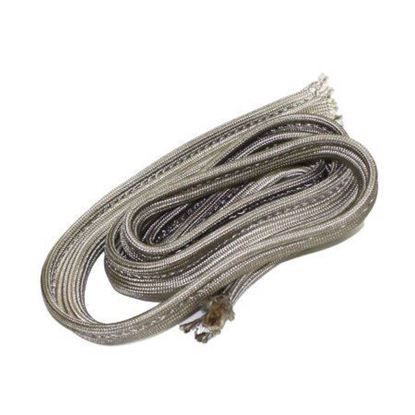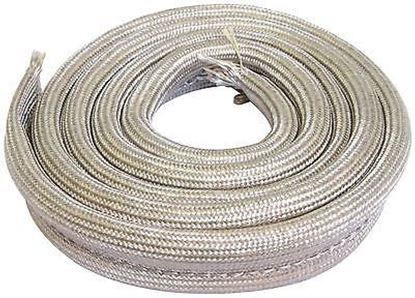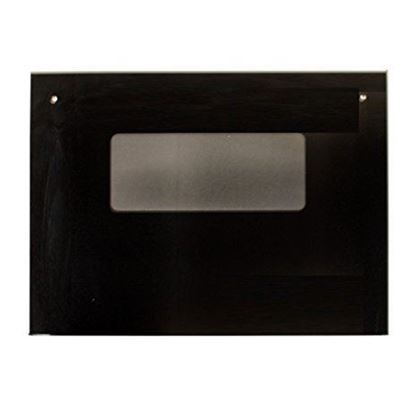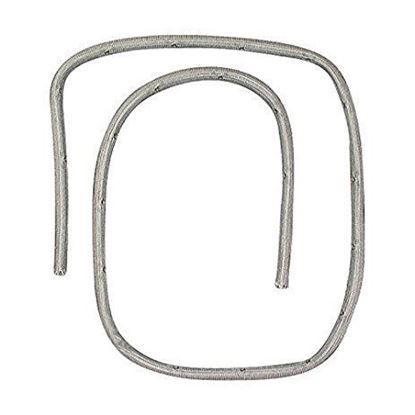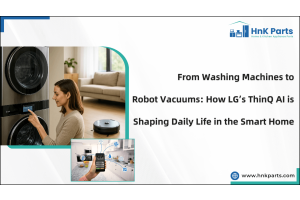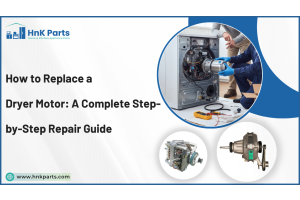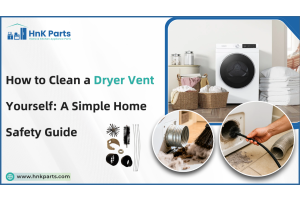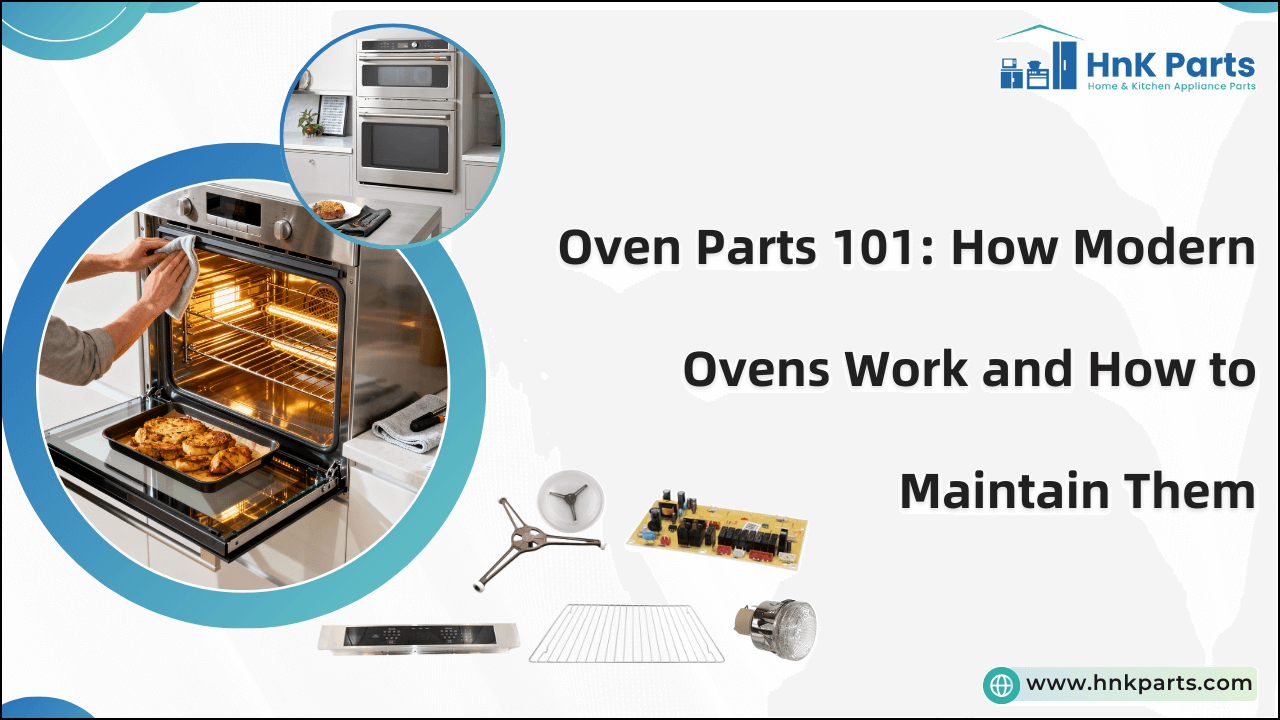
Oven Parts 101: How Modern Ovens Work and How to Maintain Them
Modern kitchens rely on ovens for consistent, efficient cooking—yet few homeowners truly understand what is happening inside the appliance or how its major systems work together. Whether you use a gas or electric model, knowing your essential oven parts, how they function, and how to maintain them can dramatically extend the life of your appliance. It also allows you to perform basic repairs, recognize common oven problems, and make informed decisions about replacement parts.
This guide breaks down how an oven works, the function of each major component, and practical maintenance and troubleshooting techniques. If you have ever wondered what part of the oven is hottest, how to care for your oven heating element, or what the bottom part of the oven is for, this article will give you a complete overview.
What Are the Main Parts of an Oven?
Regardless of brand or fuel type, most ovens include the same fundamental components. Understanding these oven components helps you diagnose issues, discuss repairs with technicians, or purchase the correct oven spare parts.
Here are the key parts found in modern ovens:
-
Heating Elements: Electric ovens contain two main elements: the bake element (bottom) and the broil element (top). Gas ovens use burners instead of electric elements.
-
Oven Temperature Sensor: This probe monitors internal heat levels and sends feedback to the control system to maintain the set temperature.
-
Oven Control Board: The electronic “brain” regulates temperature, timers, cooking modes, and heating cycles.
-
Convection Oven Fan: In convection models, this fan circulates air for faster, even heating.
-
Oven Door Gasket: A heat-resistant seal that prevents hot air from escaping during cooking.
-
Igniters or Burners (Gas Ovens): These gas oven parts deliver flame-based heat and rely on proper ignition to function efficiently.
-
Oven Racks and Interior Cavity: Designed for airflow and even heat distribution.
-
Oven Light and Light Housing: Allows visibility inside the cooking chamber.
-
Insulation Panels: Keep heat inside and protect external surfaces from becoming too hot.
-
Bottom Drawer or Lower Compartment: Many homeowners ask what the bottom part of the oven is for. Depending on the model, it may be a warming drawer, broiler compartment, or simply storage.
These parts vary slightly across the best oven brands, but the principles remain consistent.
Looking for dependable, long-lasting appliance parts you can trust? HnK Parts offers a complete range of high-quality home appliance parts for ovens, refrigerators, ice machines, and more. With fast shipping, expert guidance, and competitive pricing, we make it easy to get your equipment running smoothly again.
How Each Oven Component Works?
Each part of the oven performs a specific function that contributes to controlled cooking performance. Below is a breakdown of how an oven works internally.
-
Heating Elements/Burners: The oven’s heating element, or burner in gas models, produces heat for baking and broiling. The bottom element handles most baking functions, while the top element provides broiling heat. If the broil element fails, top heat weakens and browning becomes uneven.
-
Temperature Sensor: The oven temperature sensor constantly measures the internal temperature and ensures the control board adjusts power to heating elements to maintain accuracy.
-
Oven Control Board: Often called the ERC (Electronic Range Control), the oven control board interprets signals from the temperature sensor, regulates heating cycles, enables convection mode, controls timers, and manages cooking presets.
-
Convection Fan: The convection oven fan improves circulation by distributing hot air throughout the cavity. This reduces cooking time and ensures consistent browning. The area near the fan is often what part of the oven is hottest because the fan pushes heated air directly toward food.
-
Oven Door Gasket: Without a strong seal, heat escapes, and the oven struggles to maintain temperature. A worn oven door gasket is a common source of heat loss and energy inefficiency.
-
Gas Ignition System: In gas ovens, an igniter glows to a specific temperature before igniting the burner. Weak igniters lead to delayed heating or failure to reach set temperatures.
-
Bottom Compartment: The purpose of the bottom part of the oven depends on the model. In gas ovens, it often serves as a lower broiler; in electric ovens, it may function as a warming drawer; and in some models, it’s simply used for storage.
Types of Ovens You’ll Find in Modern Kitchens
While the essential components remain similar, different oven categories offer unique features and heating methods.
Electric Ovens
Electric ovens rely on key electric oven parts such as heating elements, thermostats, and digital control boards. They deliver highly consistent, even heating, making them ideal for baking, roasting, and precise temperature-sensitive recipes. Their intuitive controls and reliability make them one of the most common choices in residential kitchens.
Gas Ovens
Gas ovens use burners and igniters to generate heat quickly, offering fast preheating and excellent moisture retention. Many chefs prefer them for their responsiveness. Replacement gas oven parts—like igniters, burners, regulators, and valves—are widely available, making maintenance practical and affordable.
Convection Ovens
Convection ovens incorporate a built-in fan to circulate air throughout the cavity, reducing hot spots and promoting faster, more uniform cooking. This technology improves browning and can reduce overall cook times.
Steam-Assisted Ovens
These ovens inject controlled steam into the cooking chamber, producing healthier meals and superior bread crusts. They are becoming increasingly popular in modern, health-focused kitchens.
Smart Ovens
Some of the best oven brands now include Wi-Fi connectivity, app-based controls, remote diagnostics, and sensor-driven cooking programs that automatically adjust time and temperature.
Combination (Combi) Ovens
Combi ovens merge steam and convection, offering remarkable versatility for baking, roasting, proofing, and more. They’re commonly found in high-end or professional kitchens.
Wall Ovens and Built-In Systems
Designed for seamless integration, wall ovens provide ergonomic access, save space, and contribute to a clean, modern kitchen aesthetic.
Understanding your oven type is essential because oven spare parts and troubleshooting steps vary between models.
Explore types of ovens explained: how to choose the right one for your kitchen as we break down each oven style, its features, and what makes it the right choice for your cooking needs.
Essential Oven Maintenance Checklist for Long-Life Performance
Preventative care reduces breakdowns and extends the lifespan of your appliance. Here are the top oven maintenance tips for long-term efficiency and safety.
-
Inspect Heating Elements Regularly: Check for blistering, cracks, or discoloration—signs you may need bake element replacement.
-
Clean Spills Immediately: Food debris can burn, smoke, and interfere with temperature accuracy.
-
Replace the Oven Door Gasket When Worn: A damaged oven door gasket causes heat leakage and longer cooking times.
-
Calibrate the Oven Temperature: If you suspect your oven runs hot or cold, verify the oven temperature sensor accuracy with an external thermometer.
-
Keep the Convection Fan Clean: Grease buildup reduces circulation efficiency and may cause noisy operation.
-
Check Gas Connections (for Gas Ovens): Ensure igniters glow properly and burners light evenly.
-
Avoid Using Foil on the Oven Floor: Foil can block airflow, damage elements, and trap heat.
-
Clean the Control Panel and Buttons: This protects the oven control board from grime and moisture infiltration.
Routine adherence to these steps significantly reduces common oven problems.
Explore how to use an oven: 6 quick & easy steps, and learn the simple basics that make baking, roasting, and heating food effortless—even if you’re a beginner.
Oven Component Problems: Causes, Symptoms & DIY Troubleshooting
Even well-maintained ovens experience occasional failures. Below is a concise oven troubleshooting guide outlining symptoms and likely causes.
|
Problem |
Symptoms |
Possible Causes |
DIY Troubleshooting |
|
Oven Not Heating Properly |
Slow or no heating |
Faulty oven heating element Damaged temperature sensor Failed control board Weak igniter (gas ovens) |
Visually inspect elements Test the oven temperature sensor with a multimeter Listen for gas ignition clicking or burner lighting delays |
|
Broil Element Not Working |
Food browns unevenly No top heat |
Burned-out broil element Wiring failure Control board relay malfunction |
Inspect the broil element for breaks Check wiring continuity Test control board relays if accessible |
|
Oven Runs Too Hot or Too Cold |
Overcooks or undercooks food |
Miscalibrated control board Faulty temperature sensor Damaged door gasket |
Compare readings with a standalone oven thermometer Inspect gasket for air leaks |
|
Convection Mode Not Circulating |
Hot spots Uneven baking |
Obstructed convection oven fan Failed fan motor |
Check for blockages around the fan Listen for unusual fan motor noises |
|
Oven Won’t Turn On |
No lights, heat, or response |
Blown thermal fuse Electrical supply issue Failed control board Broken igniter in gas models |
Check circuit breaker Test thermal fuse Inspect igniter for glowing/operation |
|
Burning Smells |
Unusual odor during use |
Food residue touching elements Melted plastic in the oven Oil buildup on the fan or burner |
Remove debris Inspect oven interior for melted materials Clean fan and burner area |
|
Strange Noises |
Clicking, grinding, or rattling sounds |
Failing fan motor Loose panels Debris in convection fan blades |
Tighten loose screws Remove debris from fan Replace failing fan motor if needed |
When DIY troubleshooting is insufficient, a certified technician can confirm which oven parts require replacement.
When to Repair vs. Replace Oven Parts
Knowing when to replace an individual part versus upgrading the entire appliance is crucial for cost-efficient decision-making.
When to Repair Oven Parts
Repairing is usually the best option when:
-
The issue is limited to one or two components.
-
Replacement elements, sensors, or fans are inexpensive.
-
Your oven is less than ten years old.
-
The brand offers readily available oven spare parts.
Common repair-friendly issues include:
-
Bake element replacement
-
New igniter installation for gas ovens
-
Replacing a worn oven door gasket
-
Installing a new temperature sensor
-
Fixing a convection oven fan motor
When to Replace the Entire Oven
Consider replacement when:
-
The control board fails, and replacement is costly.
-
Multiple electric oven parts or gas oven parts fail simultaneously.
-
The oven is old, inefficient, or unreliable.
-
Better technology is available among the best oven brands.
-
Repair cost exceeds 50 percent of a new appliance.
A full replacement is also wise when the oven’s heating performance becomes unreliable due to structural issues such as compromised insulation or rusted internal panels.
Final Summary: Understanding Oven Parts Helps You Maintain Performance & Avoid Breakdowns
Knowing how modern ovens work enables you to maintain your appliance more effectively, troubleshoot performance issues, and communicate clearly with repair professionals. By understanding the function of major oven components—from the heating elements and temperature sensor to the control board and convection fan—you can prevent many common oven problems before they escalate.
Key takeaways:
-
Regular inspection of the oven heating element, door gasket, and convection fan helps maintain consistent performance.
-
Calibrating oven temperature improves accuracy and prevents uneven cooking.
-
A clear oven troubleshooting guide makes it easier to decide between DIY fixes and professional repairs.
-
Understanding your oven’s components reduces repair costs and minimizes downtime.
-
Knowledge of how your oven works—electric, gas, or convection—supports smarter maintenance decisions.
-
Proper care extends appliance life and keeps your oven performing reliably for years.
FAQs
Why is my oven not heating even though the element looks fine?
Even if the element appears intact, issues like a faulty temperature sensor, a bad control board, or a weak gas igniter can prevent the oven from heating properly.
How do I know if my oven temperature sensor is bad?
A bad sensor often causes inaccurate temperatures; the oven may run too hot or too cold, and testing it with a multimeter can confirm failure.
What is the difference between a bake element and a broil element?
The bake element at the bottom provides steady heat for cooking, while the broil element at the top delivers high, direct heat for browning and searing.
How often should oven parts be cleaned or maintained?
Basic cleaning should be done monthly, while deeper maintenance—like checking gaskets, sensors, and fans—should be performed every 6–12 months.


